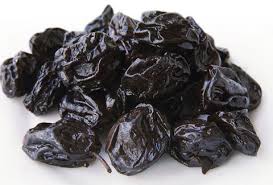Many women suffer from constipation after giving birth. Constipation is defined as passing hard, dry stools less than three times each week. Several factors lead to constipation after delivery, including not drinking enough fluids, less physical activity, taking pain medications, and not getting enough fiber in the diet. The best solution is increased exercise and a healthier diet. Many women want to take Miralax for relief. But is Miralax safe while breastfeeding?
Can You Take Miralax During Breastfeeding?
It’s important to remember that there have been no tests on Miralax and breastfeeding. But scientists do know that the medication is not absorbed by the bloodstream, which would make it very difficult to get into breast milk. But even given that fact, potential problems have not been ruled out. That’s why it is so important to speak to your doctor before taking Miralax, so that you both can weigh the benefits and possible damage, or work together to figure out the best solution for your post-delivery constipation.
Laxatives While Breastfeeding
If you have to use laxatives during breastfeeding, it’s always best to go for bulk or osmotic laxatives instead of stimulants. Here is more information on each.
- Bulk Laxatives. These laxatives work very well for hard stools and small bowel movements; however, the downside is that it takes 72 hours or so to help. Laxatives absorb water from the gut, which then bulks up the stool with fluid, making it easier to pass. The body absorbs very little of the laxative, so they are relatively safe to use during breastfeeding. Ispaghula, psyllium, and sterculia all belong to bulk laxatives.
- Osmotic Laxatives. These work by increasing fluid found in the large bowel. Though these take a while to work, they do work faster than bulk laxatives. The stools are softer, which makes them much easier to pass. Some does get into breast milk, but the transmission is very low. Common osmotic laxatives are lactulose, magnesium hydroxide, and magnesium sulphate.
- Stimulant Laxatives. Stimulants lead to evacuation of all bowel products, which empties the bowel so thoroughly that it takes several days for more stool to form. In addition, the body can become dependent upon them. These are especially helpful when taken at night, because they will usually produce a bowel movement by morning. These do seep into breast milk, and sometimes babies have loose bowel movements when the mother is taking these laxatives. The representative medications are sodium picosulphate, bisacodyl, and senna.
Know When to See a Doctor
The relation between Miralax and breastfeeding is not fully investigated. Whether you are taking Miralax or opting for other laxatives, it is important to consult your doctor beforehand. Any of these signs should send you to the physician immediately:
- Bloody stools
- Severe cramps
- Abdominal pain
- Weakness or unusual tiredness
- Dizziness
- Rectal bleeding
- Unexplained changes in bowel movements
- Constipation that lasts longer than seven days despite medications
How to Treat Constipation Naturally While Breastfeeding
1. Drink Water

When you are hydrated, your stools will be more likely to be softer and easy to pass. Consume a great deal of water while breastfeeding – as your body makes more milk for the baby, it draws from your own hydration reserves, so you must replenish them. In addition to six to eight glasses of water daily, try to drink warm liquids first thing in the morning.
2. Have Some Prunes

Prunes or prune juice is well known in treating constipation. Rather than dealing with Miralax and breastfeeding questions, turn instead to prunes. They have three grams of fiber for every five pieces of fruits. The sorbitol content in prunes is a natural laxative.
3. Get Fiber

High fiber foods can help relieve constipation. Whole grain cereals and breads, brown rice, vegetables and fresh fruits are good choices. You can also try legumes, navy beans, chickpeas, lentils, kidney beans and soy beans to add soluble fiber.
4. Take a Walk
Exercise can help the bowels move properly. This can be tough if you are recovering from a difficult delivery or a C-section, but it’s a good idea to get some walk around to avoid constipation.
5. Breastfeed Often

The more you breastfeed your baby, the more your uterus will contract. These contractions can also help loosen up the bowel, making movements easier.
6. Eschew Problematic Foods
There are several foods that make constipation even worse, including white bread, donuts, potato chips, fast-food burgers, sausages, chocolate, unripe bananas and foods high in sugars and fats. These also include dairy products, ice cream and cheese.
7. Try Massage

Before dealing with Miralax and breastfeeding issues, try self-massage to loosen the bowels. Lie on your back and use your fingers to massage around your belly button. Use clockwise rotations, and start with light pressure, increasing as you go. Eventually build up to using both hands to make circles around your abdomen.
8. Don't Resist the Urge
If you feel the urge to go, go immediately. Waiting can make the stool harder and that can make it take even longer to pass. Sit on the toilet seat without hovering or perching.
